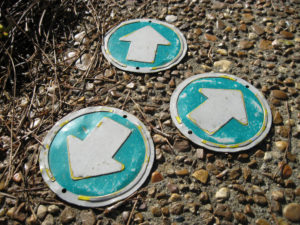From a Student’s View: Taking a MOOC on Maps with Friends
We’re soon coming up on the end of the first year in Vanderbilt’s MOOC (massive open online course) initiative, which is, I think, seven years in “MOOC years.” Vanderbilt has offered three MOOCs thus far, all on the Coursera platform, and there are three more in the pipeline. (You can see all of Vanderbilt’s MOOC offerings here.) The CFT has been supporting the initiative primarily by helping the faculty involved design their courses. How do you create an effective learning environment online for thousands and thousands of students? We haven’t fully answered that question, but we have some promising ideas after a year experimenting in this space. And I’m confident that Doug Fisher, director of Vanderbilt’s new Institute for Digital Learning, will help us continue to explore this question in the coming years.
This past week, I’ve taken the opportunity to experience a MOOC from the “other side” by enrolling as a student in “Maps and the Geospatial Revolution,” a Penn State MOOC taught by Anthony Robinson on the Coursera platform. I’ve had an interest in GIS (geographic information systems) for a long time, ever since I visited a university GIS lab during a high school field trip. There’s probably a parallel universe where I have a career based in GIS instead of mathematics!
When I heard about the Penn State MOOC, I thought it would be interesting to take, but I hesitated to sign up. I’m a serial MOOC dropout, having signed up for half a dozen MOOCs that looked interesting, but not making it past the first day in any of them. (I’m using “first day” metaphorically here–MOOCs are mostly asynchronous, so I really mean that I didn’t dip into the MOOC for more than an hour or so.) I probably would have signed up and dropped out of this MOOC, too, except that Todd Hughes, director of instructional technologies at Vanderbilt’s Center for Second Language Studies, organized a local Vanderbilt study group for the course.
It turns out that there are at least a couple dozen Vanderbilt faculty, staff, and grad students interested in taking this MOOC on maps together. Most of the study group participants come from the humanities, but we have faculty from Peabody and Engineering and staff from the Library, as well. Todd has organized weekly meetings for us to discuss the experience of taking a MOOC, which is a new one for most of us, and to share what we’re learning about maps as we participate in the course activities. Todd and I have set up a group blog for study group participants to share reflections and resources, and we’ve designed a hashtag on Twitter (#vandymaps) to organize conversation there.
As I’ve mentioned elsewhere, most MOOCs offered today aren’t meant as undergraduate course replacements, in spite of all the outcry from faculty concerned that their own courses will be replaced by MOOCs. Rather, most current MOOCs are offered as educational outreach, and many students take these MOOCs as part of ongoing professional development. That’s certainly how our study group participants are approaching this MOOC. None of us (to my knowledge) are trying to get any kind of course credit here. What’s fascinating to me–and a lot of fun–is that we’re engaged in this professional development together. Thanks to the study group, I’ve already completed the Week 1 activities in “Maps and the Geospatial Revolution,” which is farther than I’ve gotten in any other MOOC I’ve taken!
For a few more reflections on my first week as a MOOC student, see my post “Getting Started, Getting Lost” over on the study group blog.
Image: “Choices,” by me, Flickr (CC)


Leave a Response